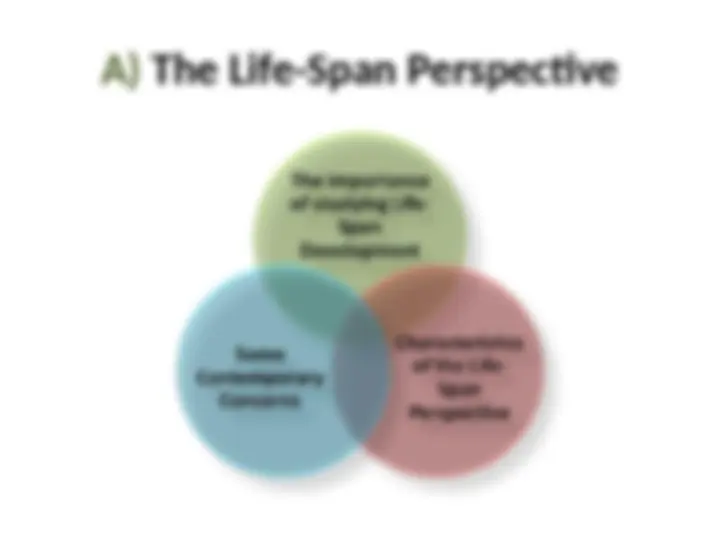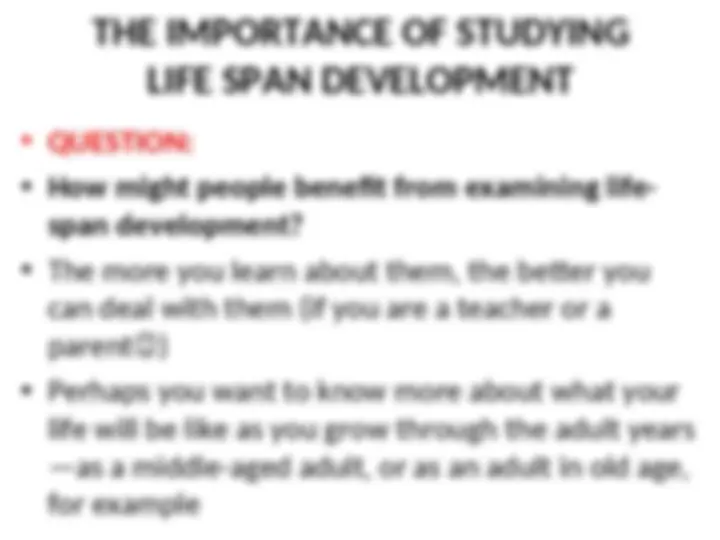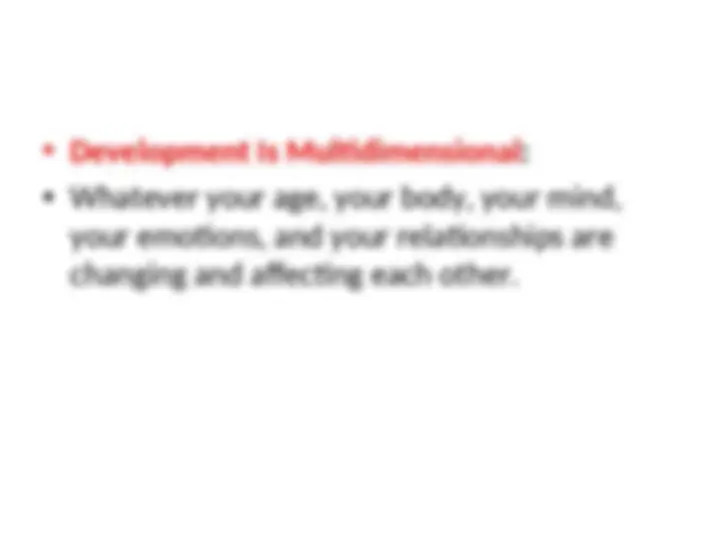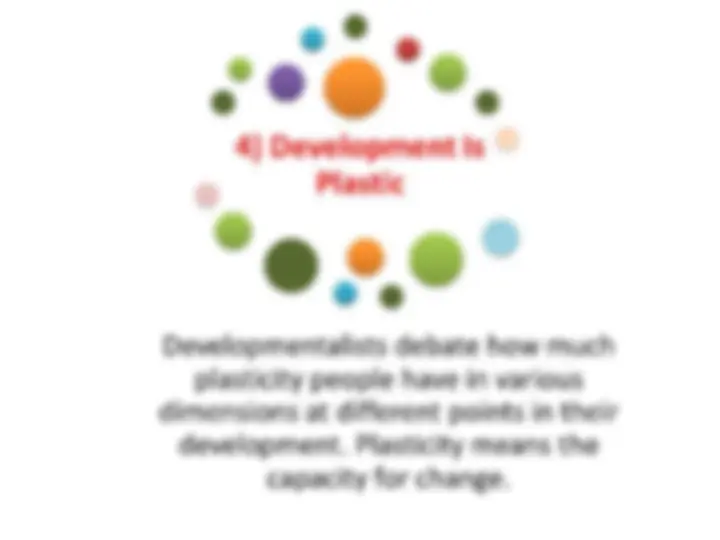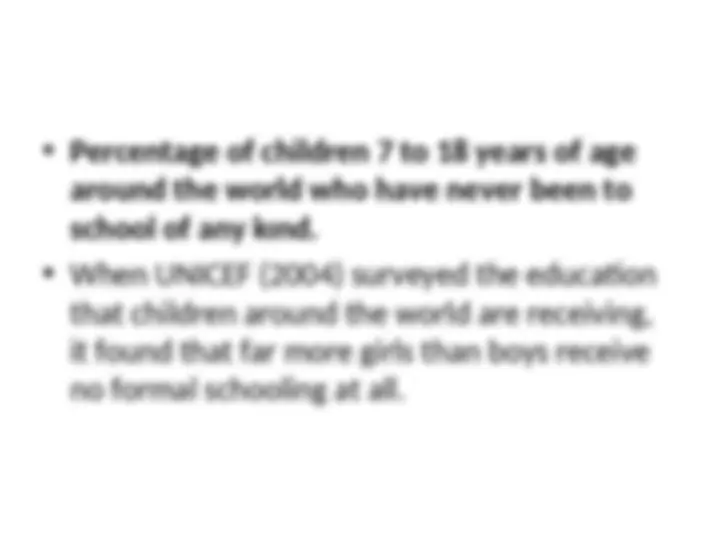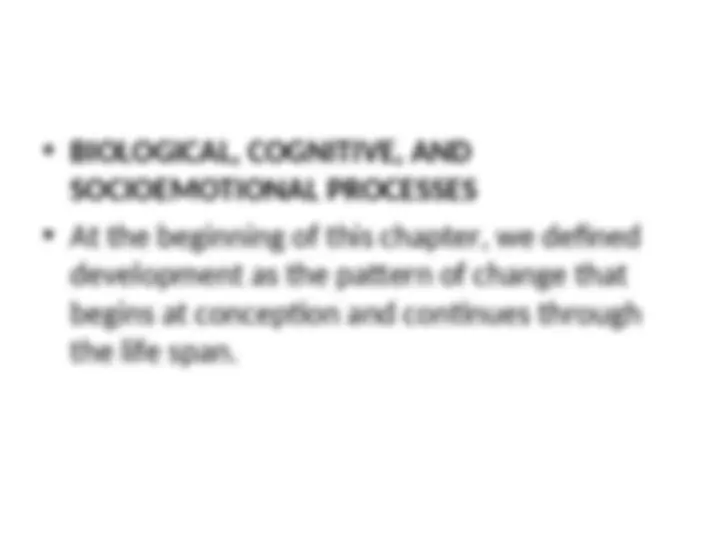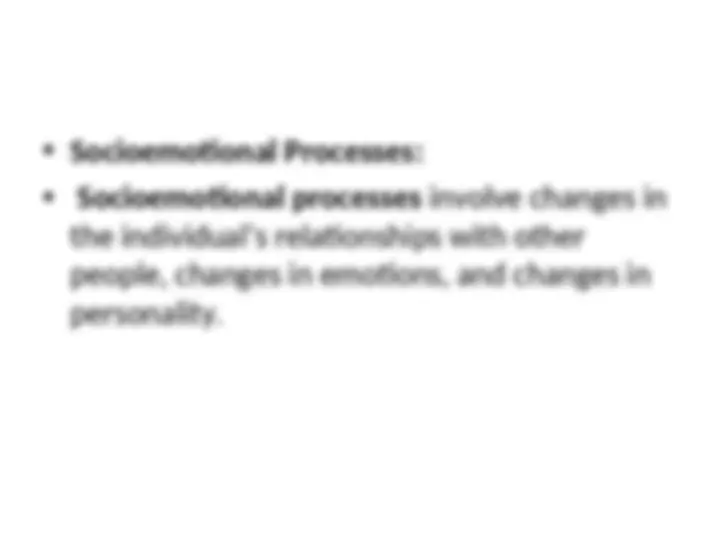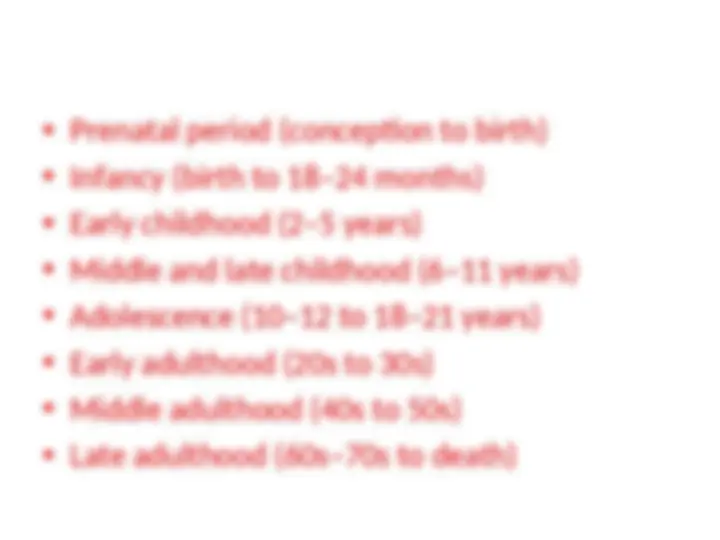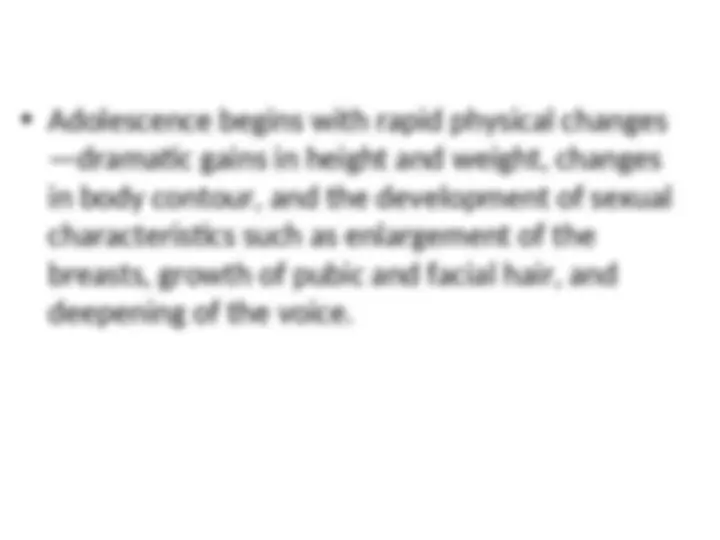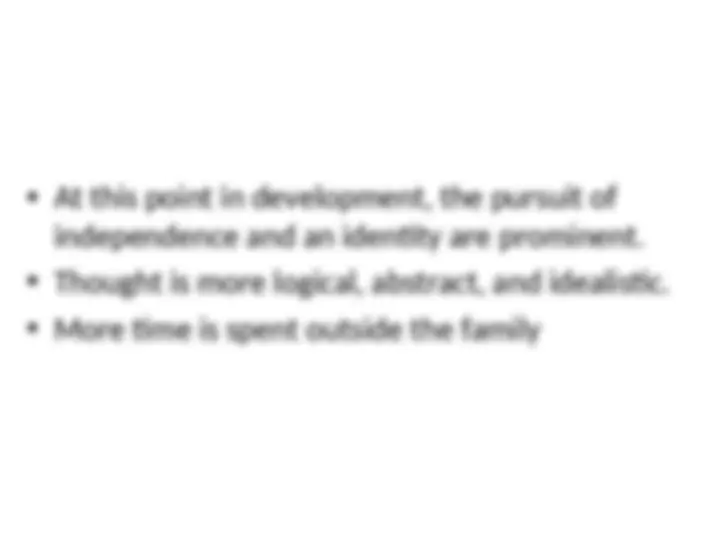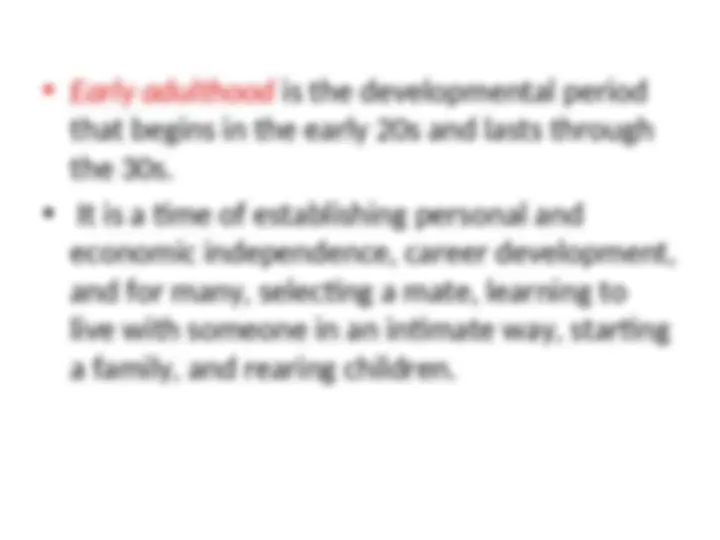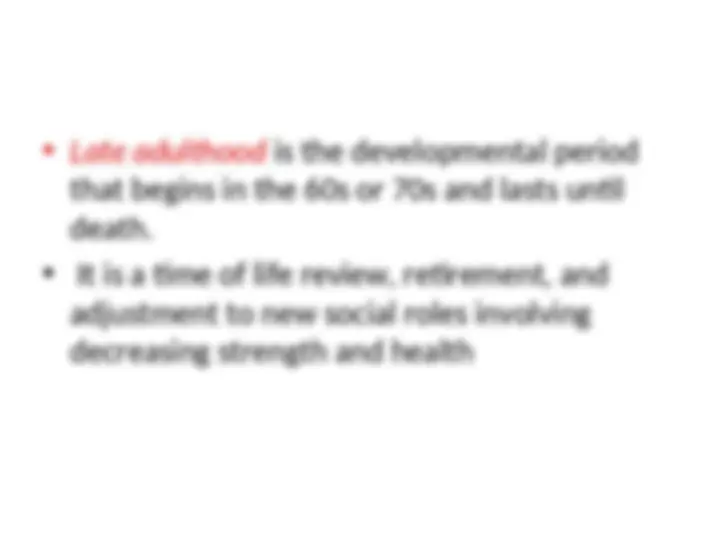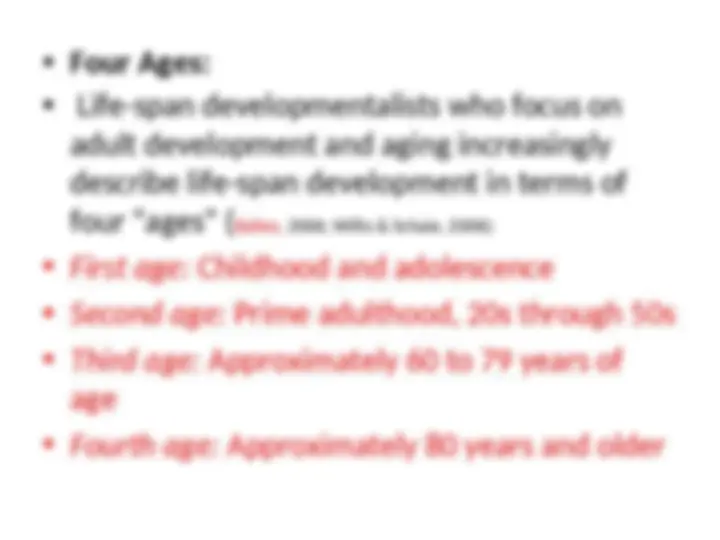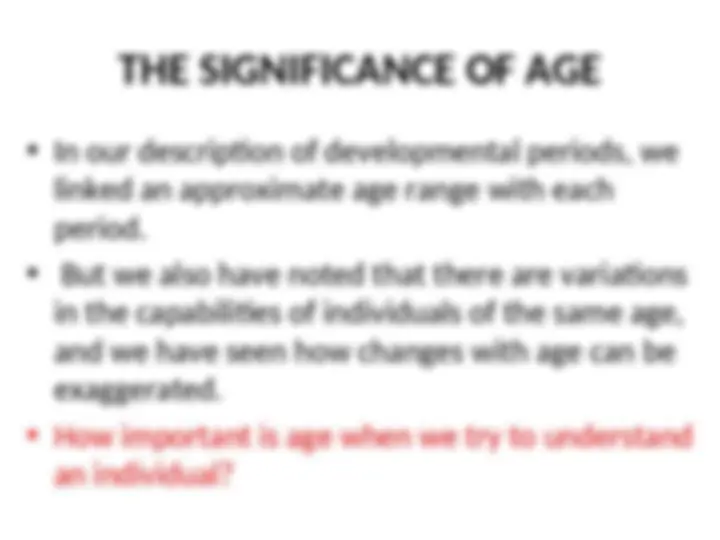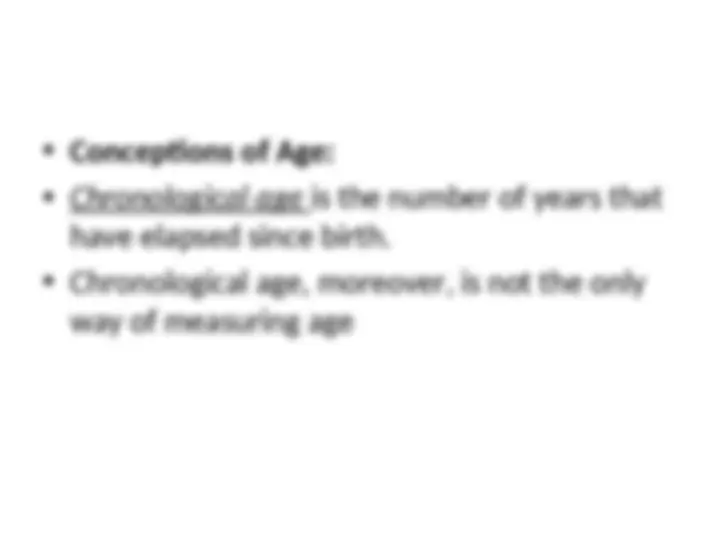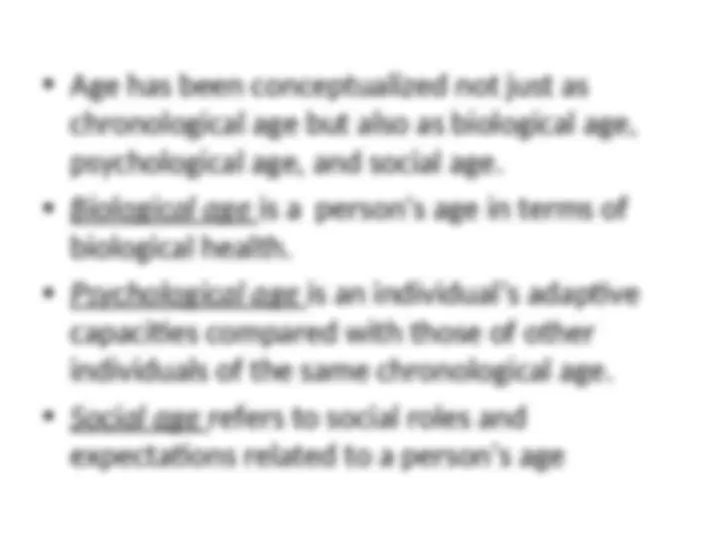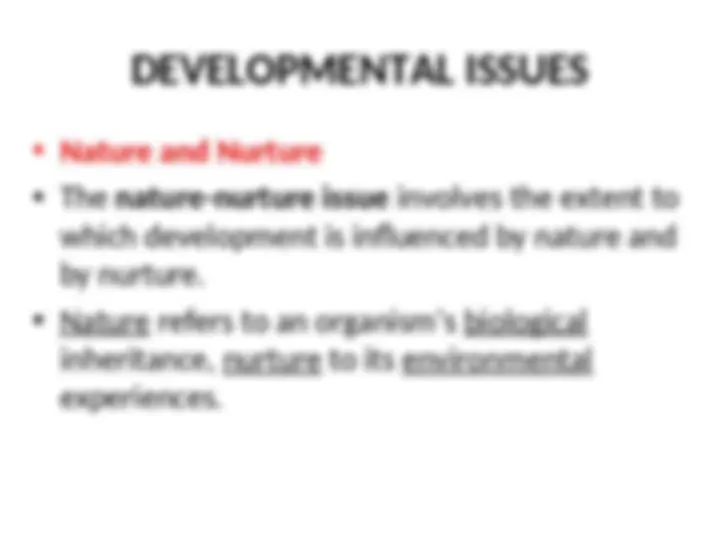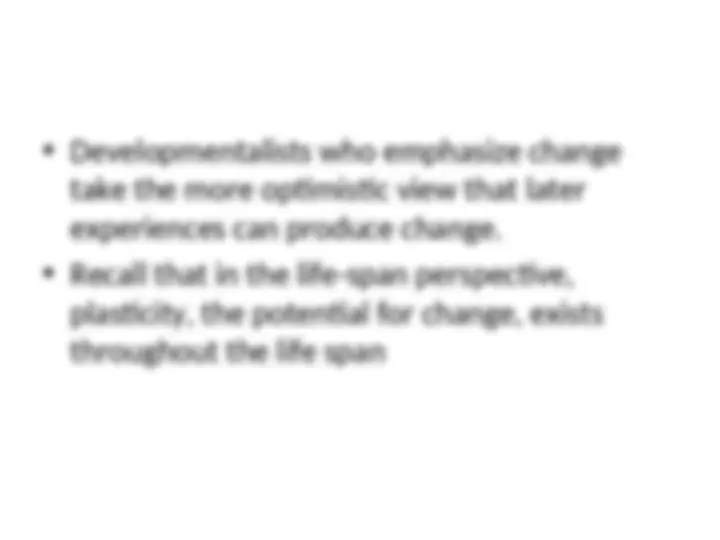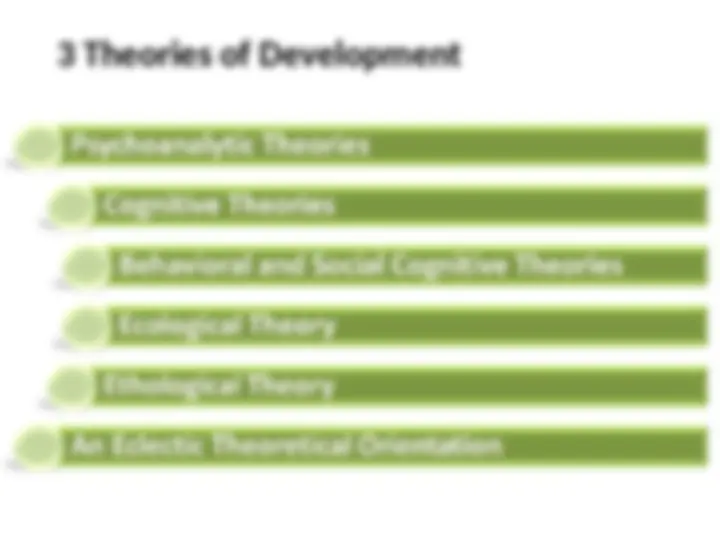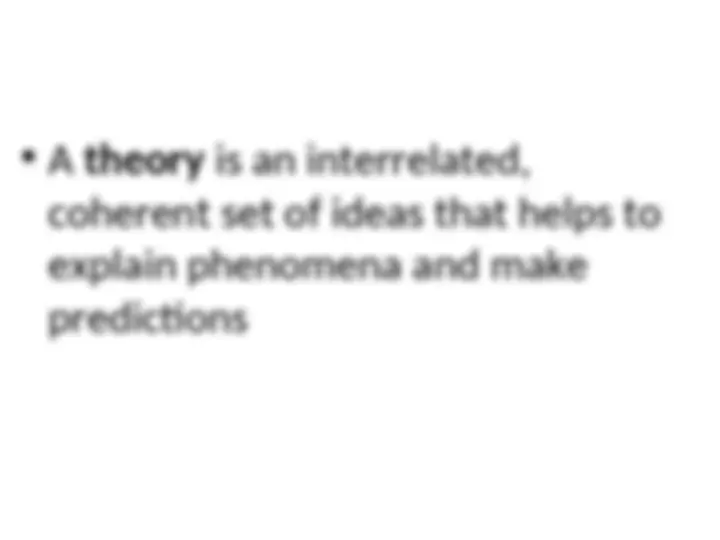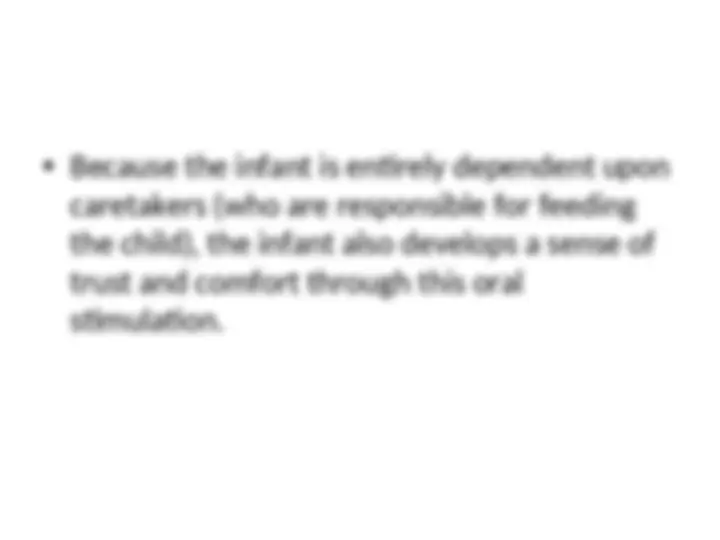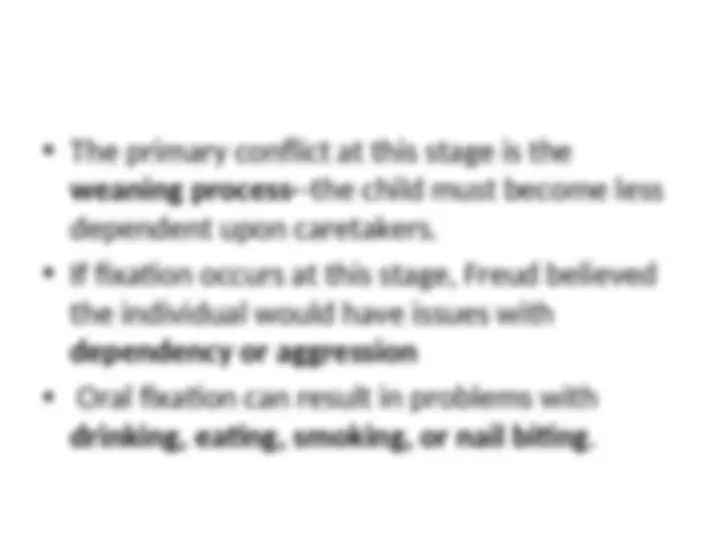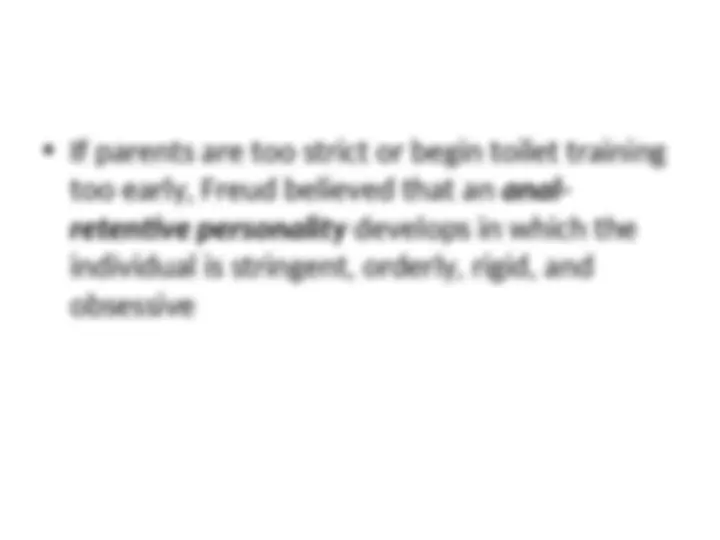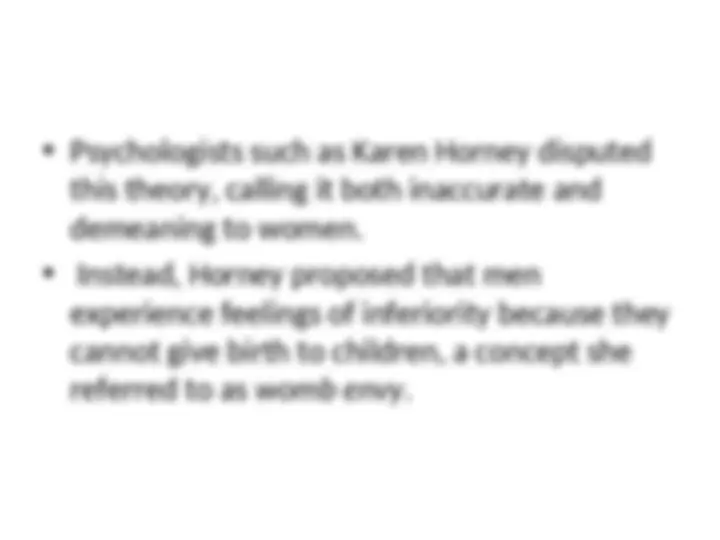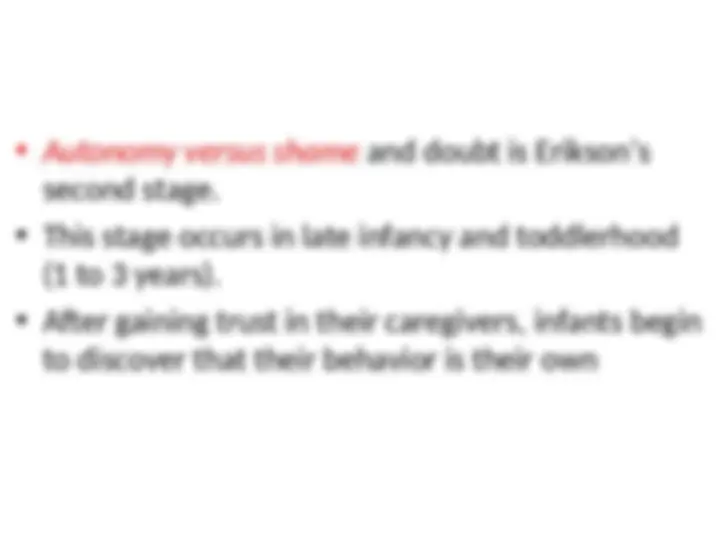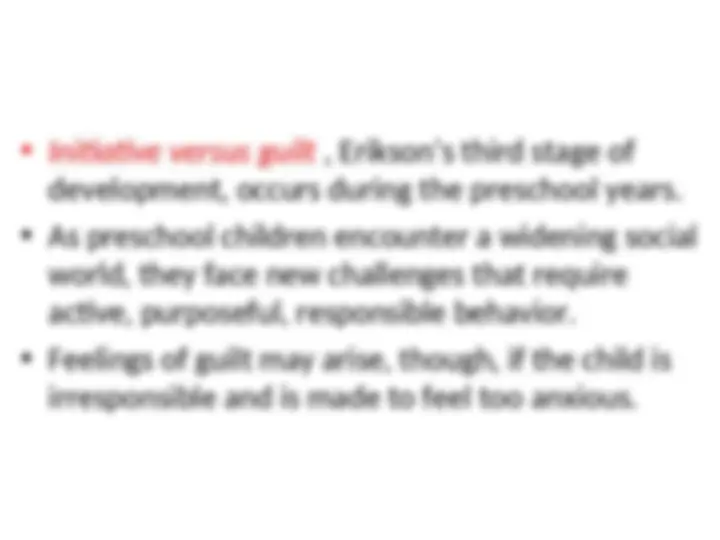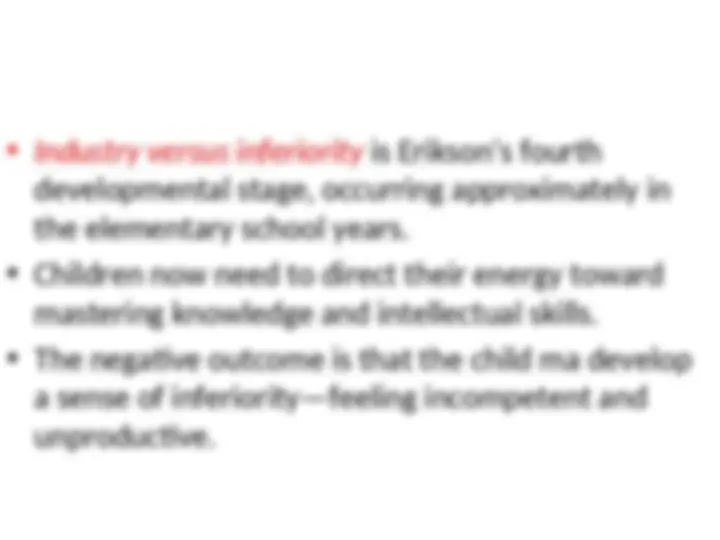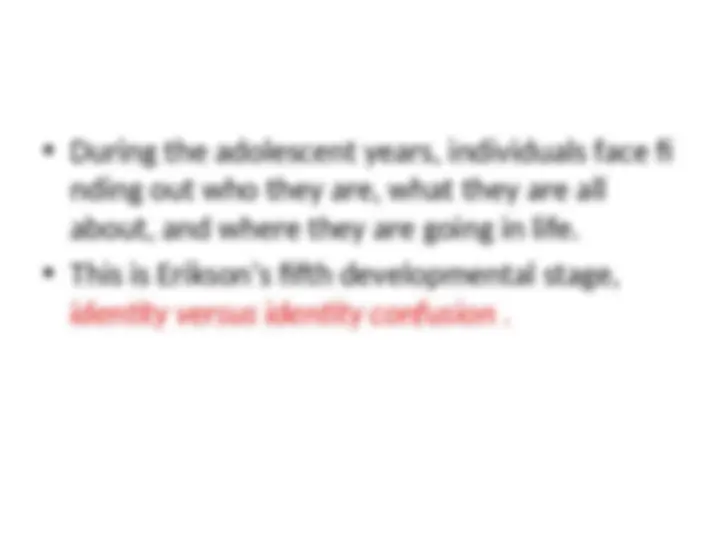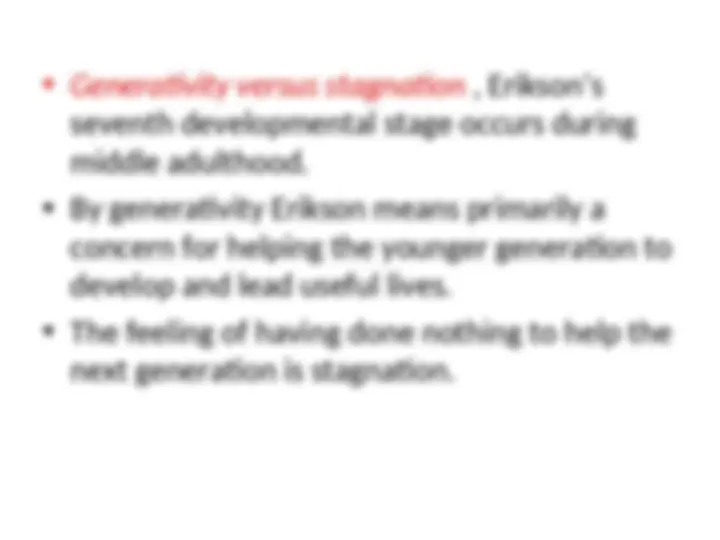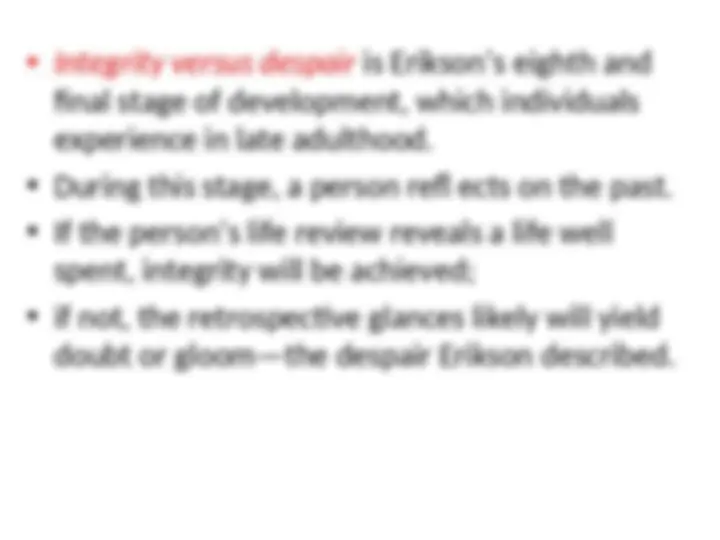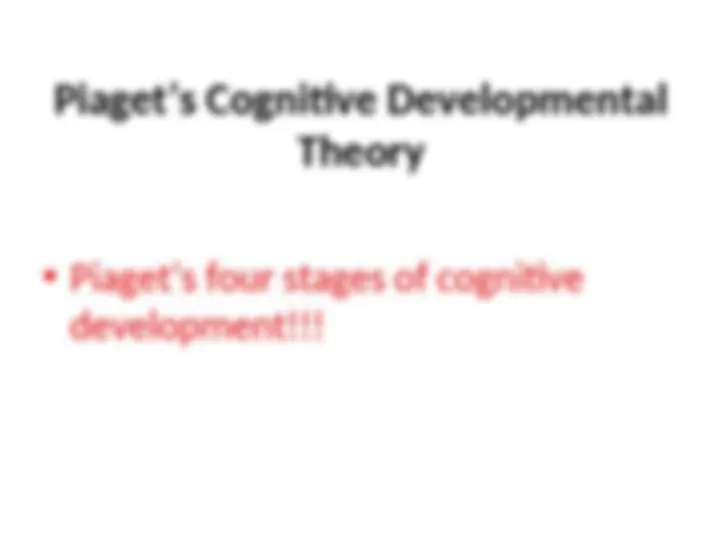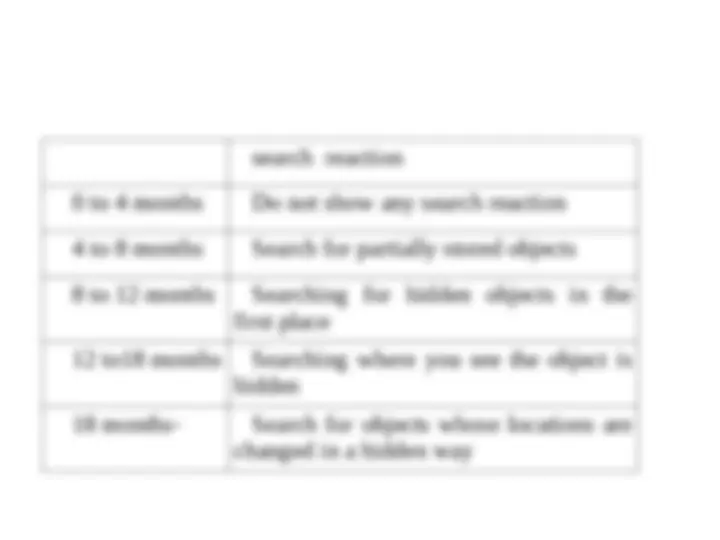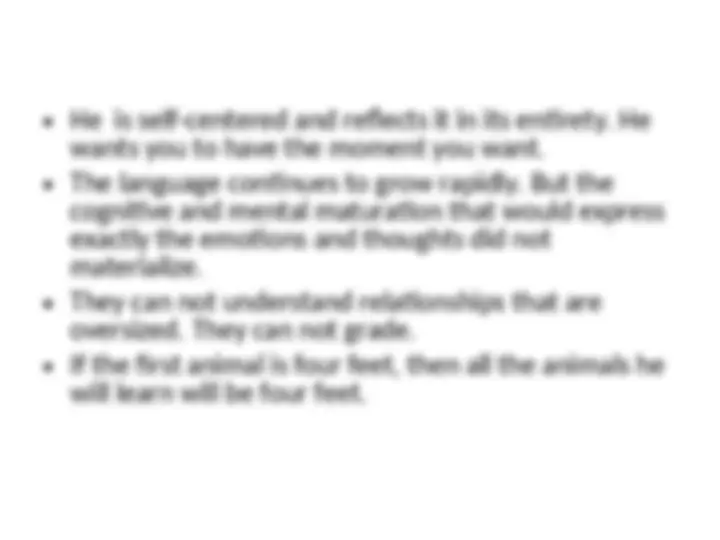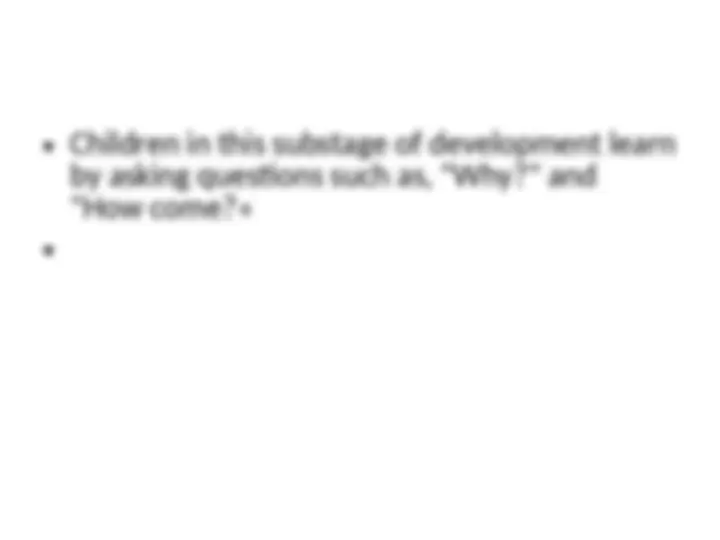Download developmental psycholology slides and more Lecture notes Psychology in PDF only on Docsity!
LIFE SPAN
Development
The Life-Span
Perspective
- (^) In this first chapter, we will explore what it means to take a life-span perspective on development, examine the nature of development, and outline how science helps us to understand it.
THE IMPORTANCE OF STUDYING
LIFE SPAN DEVELOPMENT
- (^) QUESTION:
- (^) How might people benefit from examining life- span development?
- (^) The more you learn about them, the better you can deal with them (if you are a teacher or a parent)
- (^) Perhaps you want to know more about what your life will be like as you grow through the adult years —as a middle-aged adult, or as an adult in old age, for example
- (^) Life-Span perspective:
- (^) The perspective that development is lifelong, multidimensional, multidirectional, plastic, multidisciplinary, and contextual; involves growth, maintenance, and regulation; and is constructed through biological, sociocultural, and individual factors working together.
- (^) Development Is Lifelong:
- (^) In the life-span perspective, early adulthood is not the endpoint of development; rather, no age period dominates development.
- (^) Researchers increasingly study the experiences and psychological orientations of adults at different points in their lives.
- (^) Development Is Multidimensional:
- (^) Whatever your age, your body, your mind, your emotions, and your relationships are changing and affecting each other.
c) SOME CONTEMPORARY CONCERNS
- (^) Pick up a newspaper or magazine and you might see headlines like these:
- (^) Health and Well-Being
- (^) Parenting and Education
- (^) Sociocultural Contexts and Diversity
- (^) Socioeconomic status (SES
- (^) Gender
- (^) Ethnicity
- (^) Percentage of children 7 to 18 years of age around the world who have never been to school of any kınd.
- (^) When UNICEF (2004) surveyed the education that children around the world are receiving, it found that far more girls than boys receive no formal schooling at all.
CHARACTERISTICS OF RESILIENT CHILDREN AND THEIR CONTEXTS Source Characteristic Individual Attractive, sociable, easygoing disposition Self-confidence, high self-esteem Talents Faith Family Close relationship to caring parent figure Authoritative parenting: warmth, structure, high expectations Socioeconomic advantages Connections to extended supportive family networks Extrafamilial Context Bonds to caring adults outside the family Connections to positive organizations Attending effective schools
2 The Nature of Development
- (^) Biological Processes
- (^) Biological processes produce changes in an individual’s physical nature.
- (^) Genes inherited from parents, the development of the brain, height and weight gains, changes in motor skills, nutrition, exercise, the hormonal changes of puberty, and cardiovascular decline are all examples of biological processes that affect development.
- (^) Cognitive Processes:
- (^) Cognitive processes refer to changes in the individual’s thought, intelligence, and language

